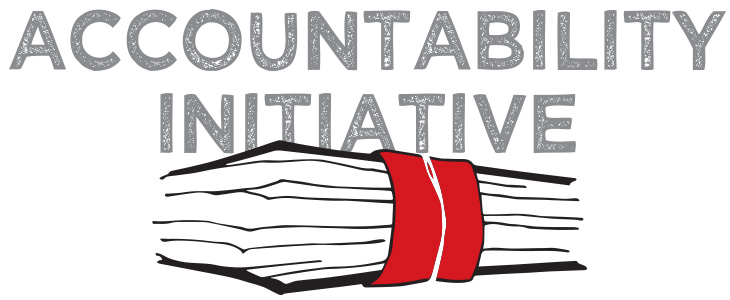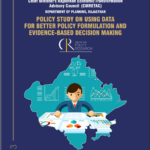
Midline Assessment in Bihar
30 October 2014
The issue of learning level came to light in the last few years due to the ASER report which brought this issue from their survey. After seeing the ASER report about the low learning level of students in the state, the Bihar government had implemented a scheme called Mission Gunwatta which aims to improve the learning level of the child. Mission Gunwatta groups students based on their learning and comprehension levels rather than by grade or age. In the first year this scheme is supposed to pay attention to two subjects Hindi and Maths. Experts thought that if students could read and learn Hindi fluently they could learn other subjects as well.
We were in one of the district in Bihar for fieldwork to see the role of lower bureaucracy for the implementation of a scheme called Mission Gunwatta, where we had been visiting schools and meeting teachers, headmasters, cluster level and block level officials who are directly involved with the implementation of the scheme . In schools, we asked the teacher ‘why is the learning level of the child so low?’ They claim that the ending of the exam system and corporal punishment are the main reasons for the low learning levels. They also asked about why the provision of internal school exam has been stopped in the Right to Education Act? Most teachers are of the view that due to the fear of examinations, students were serious about studies and were interested in learning enough to pass the exam but now they do not have that fear, because of the clauses in the RTE every child knows that they would promote to the next class.
Although this scheme is a five year plan (see the guidelines sited above), the government decided to check the progress of this scheme and therefore conducted a mid-line assessment for these two subjects. This test was scheduled to be on September 22, 2014. It was to be conducted in all the government schools of the state wherein only the students of class 3, 5 and 7 were expected to appear for this assessment. Since teachers think that ending the school exam is a major cause for the low learning level of the child, we planned to see, how much attention has been given to this test by the teachers themselves. The focus was also to see how the state machinery at lower levels actually implements a government scheme? To gain insight we attended the training event for the mid-line assessment and visited some of the schools on the day of assessment. This blog simply describes our observations during the training session and the practices occurred in different school on the actual assessment day.
The training programme for Mid-line test:
At first we attended the training for this programme in one of the block in Bihar. We reached the meeting 45 minutes late, there were only 6 of the 26 people present at the cluster resource centre (CRC), where this training was scheduled. Two of the six were sleeping flat on the carpet while the rest including the CRC coordinator (CRCC) were huddled in a group and chatting away. The CRCC started making some excuses for the absence of the remaining 20, saying that this must have been due to the Jeevit Putrika Vrat (mothers fast for their kids’ long lives) the next day i.e. 16th September as most people start preparations a day before. The meeting finally started at half an hour after we reached. The CRCC began by stating that this training session was only a refresher on the Midline Teacher Led Self Assessment (MTLSA) and went through the procedural details step by step. None of the teachers looked comfortable with the concept of the MTLSA. The CRCC added that there was going to be no OMR (Optical Mark Reading- it is a method of entering data into a computer system. OMR reads pencil or pen marks made in pre-defined positions on paper forms as responses to questions or tick list prompts) based test as was discussed earlier and so he started discussing the subjective question paper.
Towards the end, a vigorous discussion on the tragedy of ending corporal punishment commenced. This discussion went on for 15-20 minutes. This was followed by a discussion on Mid Day Meals (MDM) and building construction in schools and the problems it was causing to Head Masters. This one day meeting ended in just two and half hours.
On Assessment day (September 22, 2014)
On the assessment day we visited few schools in two blocks in Bihar and tried to map out the activities in the schools during this test. We reached a school at 10:25am. Except few students who were doing the cleaning work in the school campus, everyone else was in their classroom. Knowing the purpose of our visit, the Head Mistress showed us the classrooms where the mid-line test was taking place.
We went different classrooms to see different activities. We visited class 3, 5and 7. Teachers were very busy explaining to the students how they need to fill the answer sheet. They were also directing to the students how to choose and tick the right answer. We asked the teacher whether the test had started. A teacher replied quickly, “it should have started by 10am but it hasn’t started yet, we received the questionnaire only a day back and did not get time to explain to the students. If we do not instruct them how they would fill these complicated things? Test will start by 11am.” We interacted with students of all three classes. None of them knew why this test was being taken or what the syllabus for this test was. The teachers were not sure of the purpose of this test either because they had been told that this test was to train kids on using OMR sheets except it wasn’t an OMR question-answer sheet. Their best guess was that this was to give students an experience of taking exams. Soon after the exam, teachers became busy with collecting exam papers and arranging them. Once they reached the HM office, all were involved with filling the answer sheets for class three students. Suddenly a teacher told us ‘Look, how much work we have to do? Now, we need to fill all the answer sheets for class three students by today itself, because CRCC will come in the evening and would collect all these things’. They forget very easily that during the school exam they have to complete tasks beyond this.
Another team visited a different school, where they reached at early morning and found that students from all classes barring 3, 5 and 7 had been given the day off by the Head Master. He took this decision on his own to avoid any difficulties that may arise while conducting the exam. Test was to begin at 11am according to the head master. Students had been sitting idle since 9am though. At 11am, teachers were still filling the exam forms. Other teachers were dilly-dallying outside while some just stared at the exam sheets which were being filled in the head master’s office. Head master had received the assessment sheets that morning itself. He had gone to collect it from the Block Resource Centre (BRC). Head master revealed that only he had taken the training for this assessment.
We visited few more schools in different block. Once we reached, asked to head master about the test and he informed us that Students from class 3 and 5 have taken both test Hindi and Maths by 1pm. Now students of class 7 are remaining, they are only who have to appear for second paper.
Towards the evening we reached another school in the same block at around 3.20pm. The test got over around 2.30pm, said one of the two teachers busy filling the School Information Schedules. Teachers at their school had apparently tick marked all the answers for students of both classes 3 and 5 though the instructions were to put the tick marks for only class 3 students. One of us asked whether she knew what was to be done with the question papers. They did not know. It will probably be given back to the students, said one of the teachers. When she asked the same question again to the head master, he said “obviously” these papers would be sent along with the answer sheets “else how will they know how to check the answers”, he replied. At the same time another teacher emerged from a classroom asking the same question. The head master looked unsure now and called the CRCC. As we left the school we heard teachers discussing whether the School Information Schedule (SIS) had to be filled using pen or pencil.
The assessment results would come later and the impact of this assessment would also be widely discussed. It would be interesting to see whether the teachers themselves think whether the assessment would have an impact on learning levels and whether the state machinery at lower levels of the bureaucracy is interested and capable enough to implement a scheme properly.
(*Parts of this blog have been taken from AI team member Vincy Davis’ field reports. The author would also like to thank Senior PAISA Associates Dinesh and Seema (Bihar) for their contributions, and to Smriti, Ekta and Aishwarya for their comments.)





